Please note: The horn shown below is a modern functional reconstruction of the Corno da Caccia con Chiavi invented by Benedetto Bergonzi in 1822. It is NOT a true copy of Sr. Bergonzi's invention since there are no known extant exemplars, models, drawings, or detailed descriptions of the construction of the original instrument. (click on photos for larger view) |
|
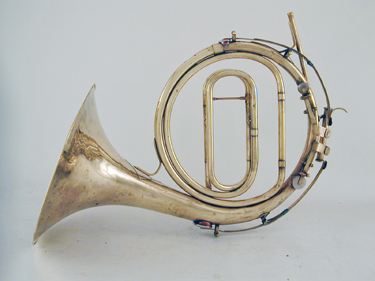 |
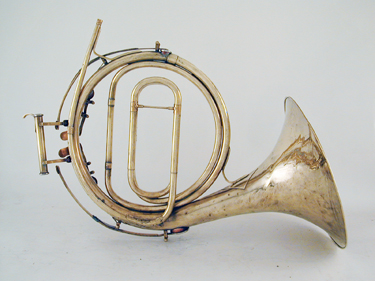 |
The horn shown above is a modern functional reconstruction of the Corno da Caccia con Chiavi (literally "hunting horn with keys") invented by Sr. Benedetto Bergonzi in 1822. It is a single horn in F to which have been added four keys. These keys have the effect of shortening the vibrating air column such that the pitch is raised in half steps, thus giving harmonic series for F♯, G, G♯, and A.1 In the left photo they are located approximately at the 6 o'clock, 4 o'clock, 2 o'clock, and 12 o'clock positions, respectively. The finger plates of the key levers have been placed in the modern positions for the left hand. A removable hand rest (clearly visible in the photo at right) has been added for the modern player accustomed to placing the right hand in the bell. Although he was an accomplished natural horn player, Sr. Bergonzi, probably gripped the corpus with his right hand leaving the bell open, since hand technique has little effect on the keyed notes. This is suggested in a letter Bergonzi submitted on August 30, 1822 to the Imperial Royal Institute of Sciences, Letters and Arts of Milan to participate in the Institute's competition that year. In describing the innovations he has made to the ordinary hunting horn and listing the facilities it could offer instrumentalists, Bergonzi states specifically that one advantage is that the right hand in the bell is no longer necessary to produce the notes notes. 2 |
|
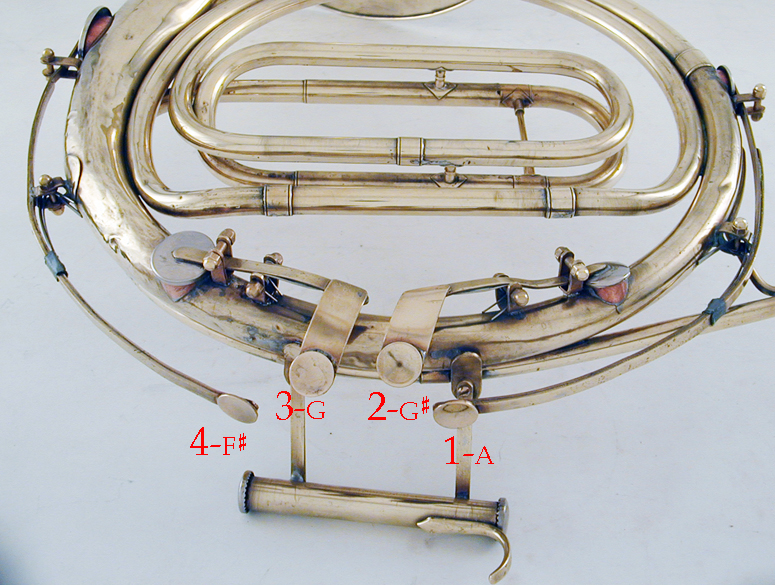 |
|
Bergonzi wrote out the fingering chart shown below as a Scala Cromatica por il Corno da Caccia colle Chiavi, ascending in sharps and descending in flats. At right is a modern transcription for the the reconstructed Corno da Caccia con Chiavi shown above. Bergonzi consistently designates notes probably played using the ring finger (G concert harmonic series) as 1 and those played with the index finger (A harmonics) as 3. (They have been reversed in the above figure to correspond to the modern convention.) Open notes (F series) are not always indicated in Bergonzi's Scala and several of the lower notes must be played by lipping down ("factitious" notes) to complete the scale. Interestingly notes fingered with a given key are not always playable in tune an octave higher as they are on a valved horn. For example one might expect that pitches sounding in half step increments above open notes would always be played as 4, 3, 2, 1 which is true in the first three octaves where the harmonics are widely spaced. Above the eighth harmonic (written third-space C), however, the second key (G#) provides better half-step intervals than the fourth key between the open harmonics. This is shown in Bergonzi's Scala and in practice on the reconstructed horn (see also the fingering chart on the right). |
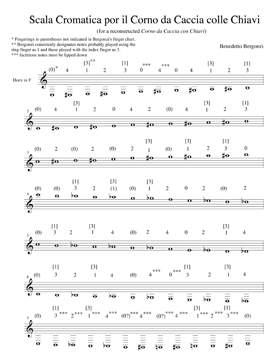 (click for a larger printable image) * Fingerings in
parentheses not indicated in Bergonzi's finger chart.
** Bergonzi consistenly designates notes probably played using the ring finger as 1 and those played with the index finger as 3. *** factitious notes must be lipped down |
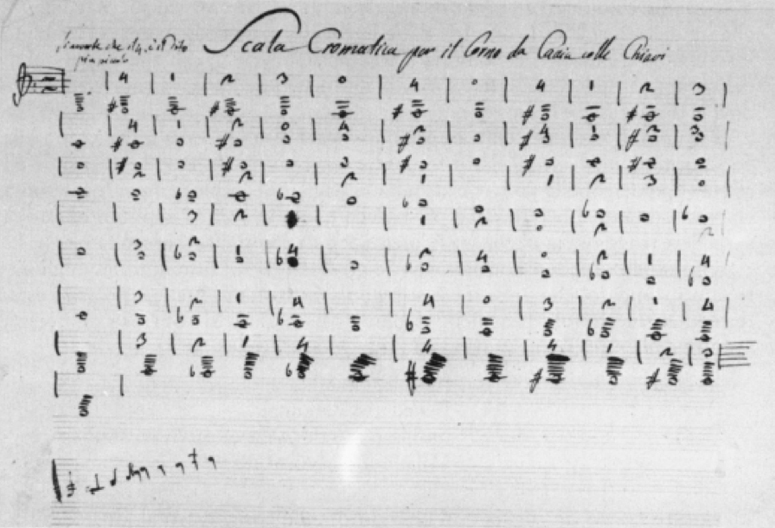 |
|
|
James Hampson
|
|
|
|
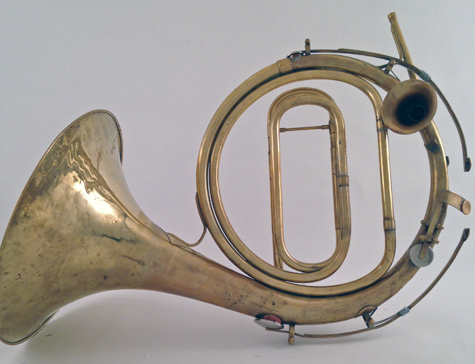 |
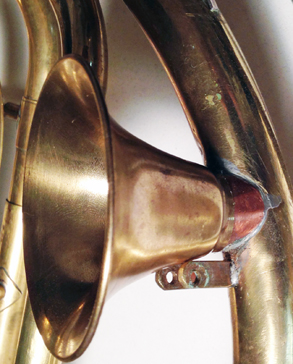 |
Benedetto Bergonzi (1790 - 1839) was born on February 28, 1790 in Cremona, Italy into the family of of great violin makers. His father was Nicola Bergonzi, a professional merchant, who was the eldest son of Zozimus and the grandson of Carlo Bergonzi, who had apprenticed in the workshop of Girolamo Amati, and later in those of Guiseppe Guarneri and Antonio Stradivari. Benedetto was a registered shopkeeper, but also an accomplished horn player. After his educational years he studied the horn with Luigi Belloli.3 |
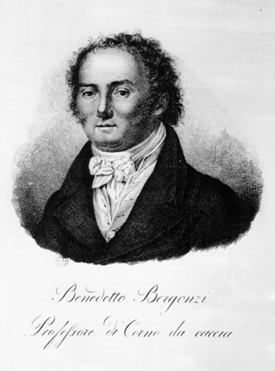 |
|
|